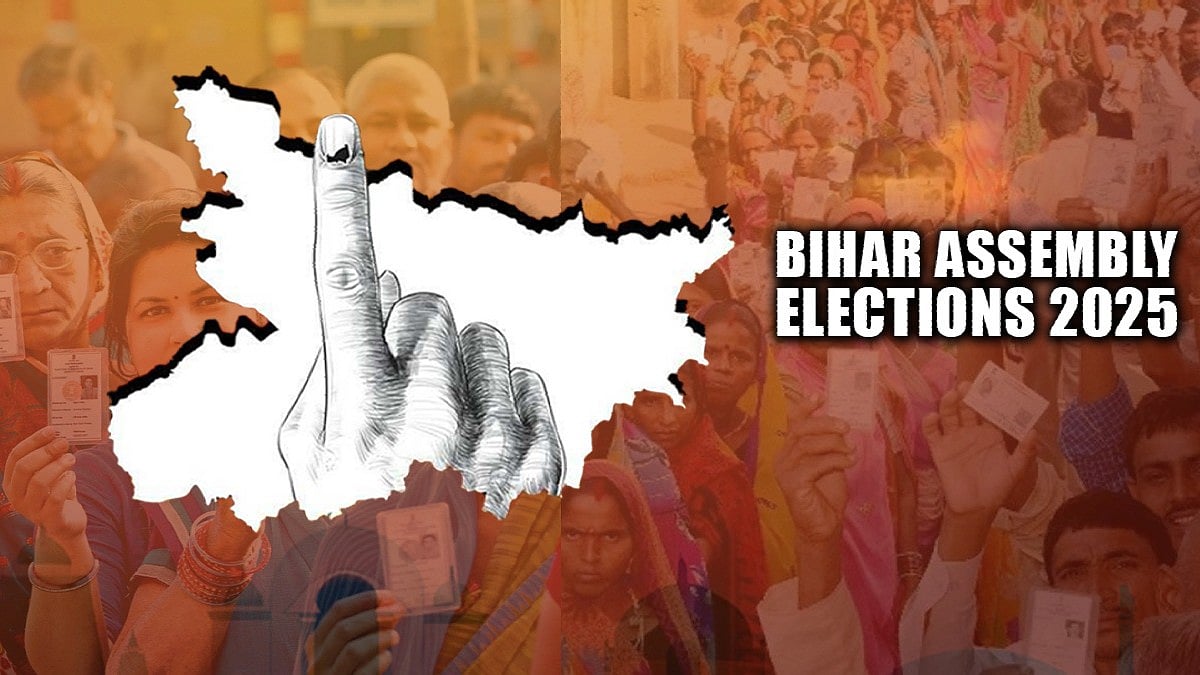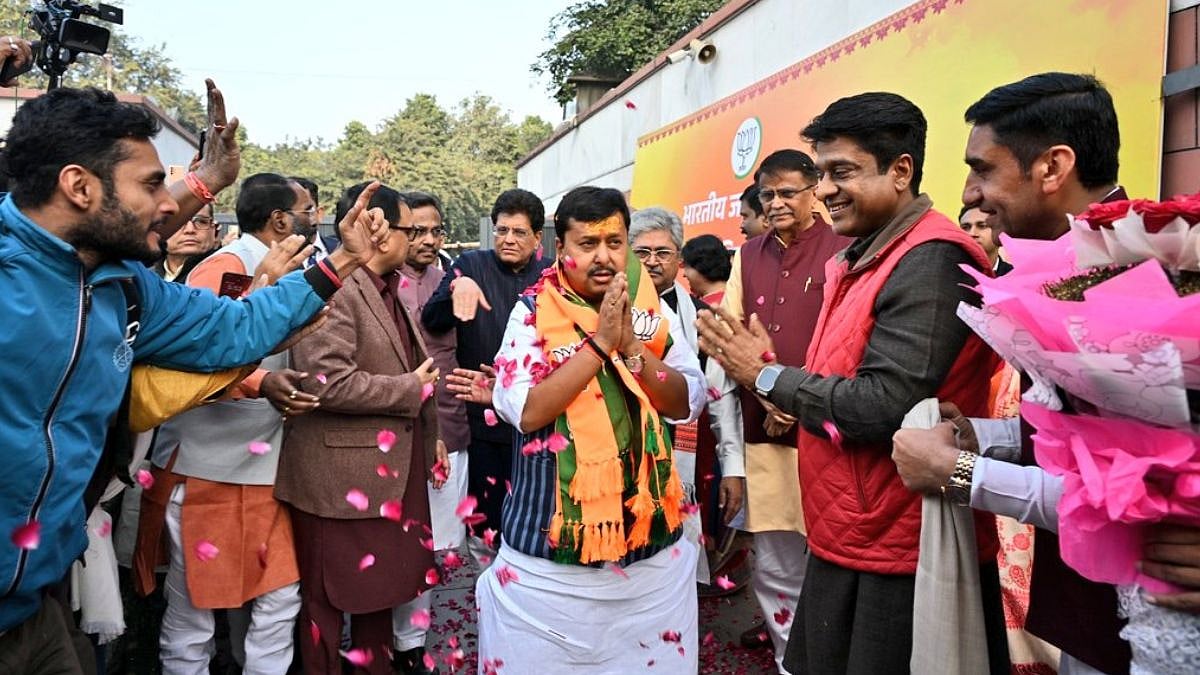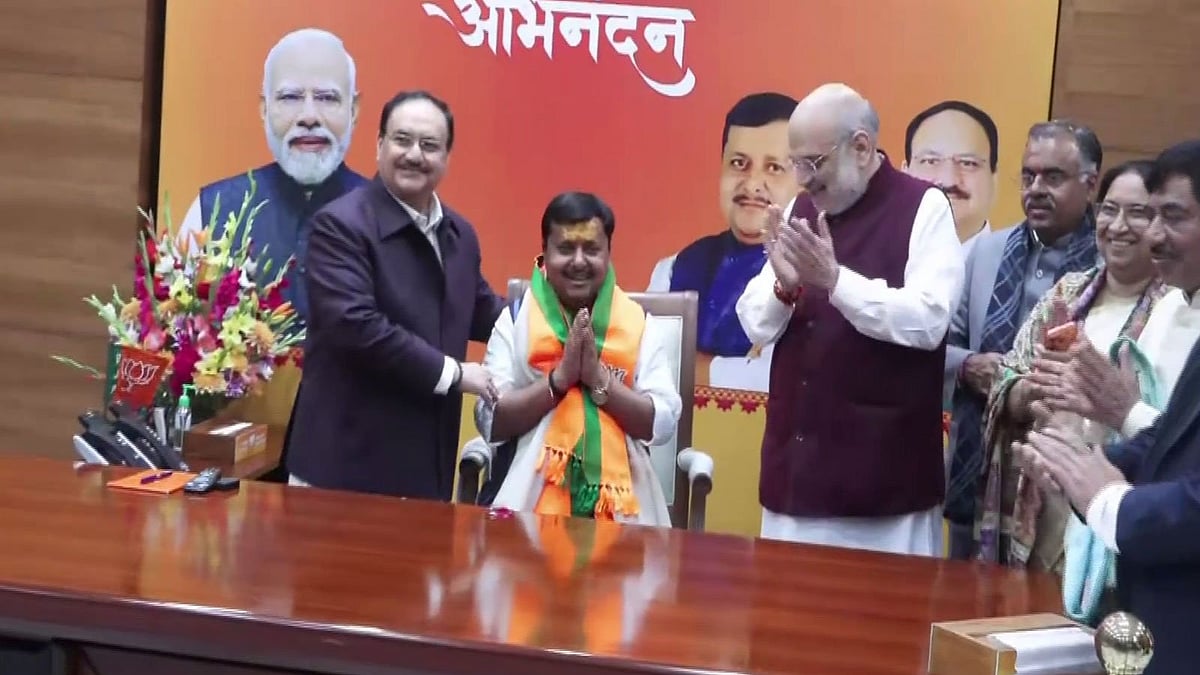With less than two weeks left for the first phase of polling on November 6, the Bihar election campaign blitz is all set to pick up pace. The election is not only a crucial test for the leadership of Janata Dal United (JDU) chief Nitish Kumar, who has served multiple terms as chief minister, thanks to his ability to forge and break political alliances at his convenience, but also for the BJP, which has long aspired to become a dominant player in the state where traditional factors like caste arithmetic and alliance management influence the poll outcome.
If the NDA is projected to have an edge in a closely fought election, the Mahagathbandhan (MGB), led by Rashtriya Janata Dal (RJD) leader Tejashwi Yadav, alongside Congress leader Rahul Gandhi, is also seen as a strong contender for power.
Going by opinion polls and early trends in the ongoing campaign, the NDA should not worry a lot but needs to work hard because of Prashant Kishor’s entry into poll politics with his Jan Suraj Party (JSP), introducing an element of unpredictability.
However, pre-poll surveys and early trends cannot be relied upon entirely, although ground reports suggest that the election could be a repeat of the 2020 contest.
Given the unpredictable nature of poll politics in India, with caste intricacies, welfare schemes, polarisation, and competitive leadership throwing surprises, if opinion surveys have mapped the Bihar voters’ mood correctly, then the MGB is likely to struggle to reach the majority mark, as political observers say the traditional bifurcation of Bihar’s political landscape with the well-entrenched vote banks shows little mobility.
This means the 10 per cent-plus vote share that Kishor’s JSP is likely to garner will impact both the NDA and the MGB, and the floating votes will ultimately swing the battle in favour of either alliance.
However, despite the JSP debuting as a third pole in Bihar’s electoral battle, which has been bipolar in the post-Mandal era, if the legacy voting trend remains unchanged with traditional fear factors continuing to influence core voter decisions, it implies that in terms of seats, the JSP may perform poorly.
Consequently, the dynamics of the Muslim-Yadav vote, the Dalit and EBC vote, and the continuing divide in the OBC vote will largely influence the election outcome. This suggests that the election outcome this time remains unpredictable; in 2020, NDA won 125 seats and the MGB 110.
When caste dominates choices and youth, while worrying about jobs, also follow family or community lines and communal issues outweigh economics, headline numbers (seats) often mask deeper structural challenges. Therefore, predicting the Bihar election can be speculative because, more than ideology, politics revolves around caste in Bihar, which makes transformative political realignment difficult.
This explains why the traditional caste support of the two alliances has struggled to expand beyond its core, thus suggesting the likelihood of an extremely tight race and a poor show for the JSP. In such a scenario, the poll result could depend on candidates, voter turnout, women’s votes, and last-minute swings.
The NDA’s carefully crafted caste coalition, complemented by Prime Minister Narendra Modi’s infrastructural push, the state government’s recently introduced multiple welfare and employment measures, financial support for Maha Dalit and education workers, near-free electricity for households, and Rs 10,000 financial help for 75 lakh women across the state, will help the NDA’s prospects of securing a majority in the 243-member house.
However, strong anti-incumbency against the BJP-JD(U) government, concerns over the Chief Minister’s health, corruption, a perception gap on development and jobs, and worsening law and order have eroded the government’s credibility and could weaken the NDA’s advantage and dent its seat tally.
Within the NDA, the BJP is predicted to fare better in the election, with its tally expected to improve from 74 seats in the last election. However, the JDU is widely expected to suffer another setback after a poor performance in 2020 when it won just 43 seats, thanks to the friction between Nitish Kumar and Chirag Paswan, who heads his late father and popular Dalit leader Ram Vilas Paswan’s Lok Jan Shakti Party.
Apart from Kishor, Chirag is reportedly the election’s other unpredictable variable. His solid influence over the Paswan community, a crucial Dalit demographic bloc, his rivalry with the Chief Minister, the friction within the NDA over seat-sharing, and the ideological fissures expose the fault lines in the alliance’s cohesion.
In the absence of a popular local leadership, the BJP faces a hurdle which it is hoping to cross with Modi’s development discourse, attacks on the RJD’s poor law-and-order legacy, and Amit Shah’s savvy campaign strategy. The MGB, on the other hand, is banking on Rahul Gandhi’s “vote theft” allegations and his Vote Adhikar Yatra, though it has lost its impact by now, and the alliance’s campaign centred around jobs, migration, economic issues, and welfare schemes.
Tejashwi’s reservation plank has reportedly consolidated the OBC and EBC votes, and the Congress has expanded its influence among the SC and the EBC groups. The MGB, anchored by Tejashwi’s rising appeal and Rahul playing a pivotal role in the alliance, is said to be better positioned to channel economic frustration into electoral gains, particularly by consolidating Muslim, OBC and youth support.
Overall, the NDA has the organisational strength and electoral advantage, whereas the MGB, despite losing momentum and internal rifts, has the potential to outperform poll projections if the electorate’s anger translates into votes. The poll result will depend on the dominant narrative, caste arithmetic and whether promises of jobs, development and political change resonate with the state’s youth.
The Bihar election is crucial for three leaders. One, Nitish Kumar, who confronts his most consequential challenge yet with his party’s voting vitality witnessing a gradual decline. Two, MGB’s chief ministerial face is Tejashwi Yadav, who anchors the Opposition’s fragile federation, and it is his moment to prove that he is a political warrior and not just a dynastic cub.
Three, Rahul Gandhi, the embattled Congress warrior, who perceives Bihar as his new proving ground to revitalise the Congress and cement his leadership to lead the Opposition alliance in the 2029 general election.
Crucial for both the NDA and the INDIA bloc, the outcome of the Bihar election will decisively decide whether the NDA tightens its governmental grip or the Opposition alliance discovers new vitality.
The writer is a senior independent Mumbai-based journalist. He tweets at @ali_chougule









